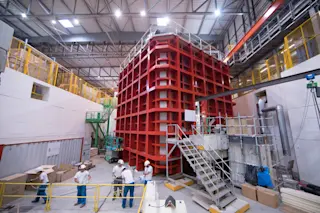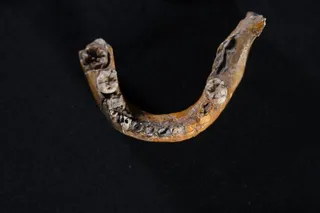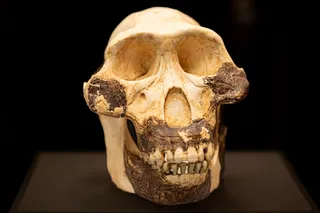Neutrinos are the most ubiquitous particles — a hundred billion zip through your fingertip each second — yet they have no charge, almost no mass, and they barely interact with other matter.
A century ago, when the Italian physicist Wolfgang Pauli predicted their existence, it wasn’t even clear how to look for them. "I have done a terrible thing,” he famously said. “I have postulated a particle that cannot be detected.”
Fortunately, he spoke too soon. Neutrinos are in fact detectable, and physicists think they could explain fundamental facts about the nature of the universe that have eluded science for decades. But to measure them properly will require a colossal feat of engineering: the Deep Underground Neutrino Experiment, or DUNE for short.
Shining anode plane assemblies dominate this panorama of the 35-ton-capacity prototype cryostat for LBNF/DUNE. (Image Courtesy of: Reidar Hahn)
The DUNE is actually two projects separated by 800 ...















